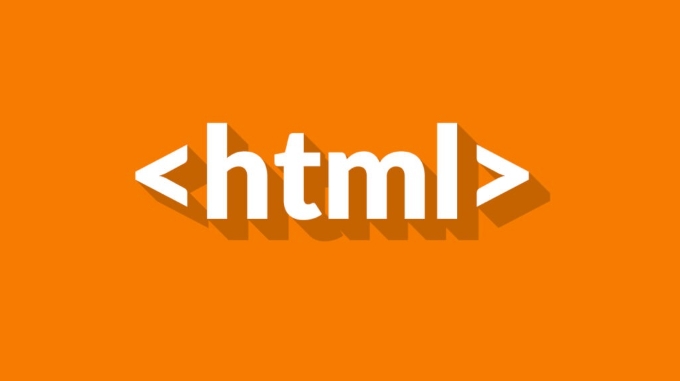如何使用thead,tbody和tfoot构建HTML表
使用<thead>、
<tbody>和 <tfoot>能提升表格的可读性、可访问性和可维护性;1. 表格应包含<thead>用于表头、 <tbody>用于主体数据、 <tfoot>用于汇总信息,且<tfoot>在代码中应位于 <tbody>之前以确保正确渲染;2. 这些元素有助于屏幕阅读器解析、支持CSS样式控制、实现打印时表头重复以及简化JavaScript操作;3. 每个表格只能有一个<thead>和一个 <tfoot>,但可包含多个 <tbody>以分组数据,应始终显式使用<th>定义表头并避免省略 <tbody>,从而增强语义化和专业性。
Using <thead>, <code><tbody>, and <code><tfoot> properly helps structure an HTML table for better readability, accessibility, and styling. These elements divide a table into logical sections: the header, body, and footer. Here's how to use them effectively.<img src="/static/imghw/default1.png" data-src="https://img.php.cn/upload/article/000/000/000/175439496521131.jpeg" class="lazy" alt="How to use thead, tbody, and tfoot to structure an HTML table"><hr>
<h3 id="strong-Basic-Structure-of-a-Table-with-thead-tbody-and-tfoot-strong"><strong>1. Basic Structure of a Table with thead, tbody, and tfoot</strong></h3>
<p>Always wrap your table content in <code><table>, and use the following elements to define its sections:<ul><li><code><thead>: Contains the header row(s), typically with column labels.<li><code><tbody>: Contains the main data rows.<li><code><tfoot>: Contains summary or totals row(s), usually at the bottom.<pre class='brush:php;toolbar:false;'><table>
<thead>
<tr>
<th>Name</th>
<th>Age</th>
<th>Salary</th>
</tr>
</thead>
<tfoot>
<tr>
<td>Total</td>
<td></td>
<td>$120,000</td>
</tr>
</tfoot>
<tbody>
<tr>
<td>John Doe</td>
<td>30</td>
<td>$70,000</td>
</tr>
<tr>
<td>Jane Smith</td>
<td>28</td>
<td>$50,000</td>
</tr>
</tbody>
</table></pre><blockquote><p>? <strong>Note:</strong> Even though <code><tfoot> appears before <tbody> in the code, browsers will render it at the bottom of the table automatically.

2. Why Use thead, tbody, and tfoot?
✅ Improved Accessibility
Screen readers can better interpret table structure when these elements are used. Users can navigate headers and footers separately from data.
✅ Better Styling with CSS
You can target specific sections easily:

thead th {
background-color: #003366;
color: white;
}
tbody tr:nth-child(even) {
background-color: #f2f2f2;
}
tfoot td {
font-weight: bold;
background-color: #ddd;
}✅ Print-Friendly Tables
When a table spans multiple printed pages, browsers can repeat the <thead> on each page automatically.
✅ JavaScript & DOM Manipulation
Easier to select and manipulate data:
// Example: Add a new row to the table body
const tableBody = document.querySelector('tbody');
const newRow = `<tr><td>New Person</td><td>35</td><td>$60,000</td></tr>`;
tableBody.insertAdjacentHTML('beforeend', newRow);3. Rules and Best Practices
- Only one
<thead>and one<tfoot>per table, but multiple<tbody>sections if needed (e.g., for grouping data). - Place
<tfoot>before<tbody>in the HTML to ensure proper rendering. - Use
<th>in<thead>for column headers (not just<td>). - Don’t skip
<tbody>—browsers often add it automatically, but it’s better to include it explicitly for clarity.
Example with multiple <tbody> sections:
<table>
<thead>
<tr><th>Department</th><th>Employee</th><th>Salary</th></tr>
</thead>
<tbody>
<tr><td>Engineering</td><td>Alice</td><td>$90,000</td></tr>
<tr><td>Engineering</td><td>Bob</td><td>$85,000</td></tr>
</tbody>
<tbody>
<tr><td>Marketing</td><td>Carol</td><td>$60,000</td></tr>
<tr><td>Marketing</td><td>Dave</td><td>$55,000</td></tr>
</tbody>
</table>This allows styling or scripting each department group separately.
Basically, using <thead>, <tbody>, and
<tfoot> isn’t required for a table to work—but it makes your tables more semantic, maintainable, and professional. Don’t skip them in real projects.
以上是如何使用thead,tbody和tfoot构建HTML表的详细内容。更多信息请关注PHP中文网其他相关文章!

热AI工具

Undress AI Tool
免费脱衣服图片

Undresser.AI Undress
人工智能驱动的应用程序,用于创建逼真的裸体照片

AI Clothes Remover
用于从照片中去除衣服的在线人工智能工具。

Clothoff.io
AI脱衣机

Video Face Swap
使用我们完全免费的人工智能换脸工具轻松在任何视频中换脸!

热门文章

热工具

记事本++7.3.1
好用且免费的代码编辑器

SublimeText3汉化版
中文版,非常好用

禅工作室 13.0.1
功能强大的PHP集成开发环境

Dreamweaver CS6
视觉化网页开发工具

SublimeText3 Mac版
神级代码编辑软件(SublimeText3)
 在HTML中实现图像的本机懒负荷
Jul 12, 2025 am 12:48 AM
在HTML中实现图像的本机懒负荷
Jul 12, 2025 am 12:48 AM
原生懒加载是一种浏览器内置功能,通过在标签中添加loading="lazy"属性实现延迟加载图片。1.它无需JavaScript或第三方库,直接在HTML中使用;2.适合用于页面下方非首屏显示的图片、图片画廊滚动加载项和大型图片资源;3.不适合首屏图片或display:none的图片;4.使用时应设置合适的占位空间以避免布局抖动;5.应结合srcset和sizes属性优化响应式图片加载;6.需要考虑兼容性问题,部分旧浏览器不支持,可通过特性检测并结合JavaScript方案作
 使用HTML SRCSET和大小属性实现响应式图像
Jul 12, 2025 am 12:15 AM
使用HTML SRCSET和大小属性实现响应式图像
Jul 12, 2025 am 12:15 AM
srcset和sizes是HTML实现响应式图片的关键属性。srcset提供多个图片源及其宽度或像素密度,如400w、800w,浏览器据此选择合适图片;sizes则定义图片在不同屏幕宽度下的显示宽度,如(max-width:600px)100vw,50vw,使浏览器更精准匹配图片尺寸。实际使用中需准备多尺寸图片、命名清晰、配合媒体查询设计布局,并测试设备表现,避免忽略sizes或单位错误,从而节省带宽并提升性能。
 使用HTML A标签创建用于导航的超链接
Jul 11, 2025 am 03:03 AM
使用HTML A标签创建用于导航的超链接
Jul 11, 2025 am 03:03 AM
使用HTML的标签可通过href属性实现页面跳转、新窗口打开、页面内定位及邮件电话链接功能。1.基本用法:通过href指定目标地址,如访问网页;2.新窗口打开:添加target="_blank"和rel="noopener"属性;3.页面内跳转:结合id与#符号实现锚点定位;4.邮件电话链接:使用mailto:或tel:协议触发系统应用。
 HTML TextArea和输入类型文本有哪些差异和用例?
Jul 12, 2025 am 02:48 AM
HTML TextArea和输入类型文本有哪些差异和用例?
Jul 12, 2025 am 02:48 AM
与的主要区别在于,textarea支持多行文本输入,而inputtext仅限单行。1.使用inputtype="text"适用于短小、单行的用户输入,如用户名、邮箱等,可设置maxlength限制字符数,浏览器提供自动填充功能,更易跨浏览器统一样式;2.使用textarea用于需要多行输入的场景,如评论框、反馈表单,支持换行和段落,可通过CSS控制大小或禁用调整功能。两者均支持占位符、必填等表单特性,但textarea通过rows和cols定义尺寸,input则使用size属
 '`vs.` `在html中
Jul 19, 2025 am 12:41 AM
'`vs.` `在html中
Jul 19, 2025 am 12:41 AM
是块级元素,用于划分大块内容区域;是内联元素,适合包裹小段文字或内容片段。具体区别如下:1.独占一行,可设置宽高、内外边距,常用于布局结构如头部、侧边栏等;2.不换行,仅占据内容宽度,用于局部样式控制如变色、加粗等;3.使用场景上,适用于整体区域的排版与结构组织,而用于不影响整体布局的小范围样式调整;4.嵌套时,可包含任何元素,而内部不应嵌套块级元素。
 如何使用HTML,CSS和JS创建简单的弹出式或模态?
Jul 12, 2025 am 02:42 AM
如何使用HTML,CSS和JS创建简单的弹出式或模态?
Jul 12, 2025 am 02:42 AM
要实现一个基础的弹窗效果,需按照以下步骤操作:1.结构:用HTML创建触发按钮、遮罩层和弹窗内容区域;2.样式:通过CSS设置默认隐藏、居中布局、遮罩背景及关闭按钮样式;3.交互:使用JavaScript绑定点击事件控制弹窗显示与隐藏,并可扩展ESC键关闭功能;4.优化:添加CSS动画提升用户体验。整个过程无需第三方库,适合快速实现基本弹窗功能。
 使用HTML模板标签使用可重复使用的内容片段
Jul 11, 2025 am 03:19 AM
使用HTML模板标签使用可重复使用的内容片段
Jul 11, 2025 am 03:19 AM
标签是HTML5引入的一个用于定义可重用内容片段的标签,它不会立即渲染,但可通过JavaScript动态插入页面。其使用流程包括:1.定义模板;2.克隆内容;3.插入DOM。例如通过document.getElementById获取模板,调用cloneNode(true)克隆并插入页面。结合数据动态填充时,可通过操作克隆后的DOM元素实现内容绑定,适用于构建商品列表、用户卡片等组件。使用时需注意不能直接访问模板子元素、避免ID冲突、处理样式作用域,并可配合WebComponents创建封装组件。
 初学者的基本HTML标签
Jul 27, 2025 am 03:45 AM
初学者的基本HTML标签
Jul 27, 2025 am 03:45 AM
要快速入门HTML,只需掌握几个基础标签即可搭建网页骨架。1.页面结构必备、和,其中是根元素,包含元信息,是内容展示区域。2.标题使用到,级别越高数字越小,正文用标签分段,避免跳级使用。3.链接使用标签并配合href属性,图片使用标签并包含src和alt属性。4.列表分为无序列表和有序列表,每个条目用表示且必须嵌套在列表中。5.初学者不必强记所有标签,边写边查更高效,掌握结构、文本、链接、图片和列表即可制作基础网页。







